Huge palaces appear on the map in Sid Meier’s Civilization VII. We see beautiful gardens, soldiers patrolling, and the pharaoh Hatshepsut walking up the palace steps guarded by huge statues of Anubis.
This is a different Civ feel, one with the charm of Anno 117. A city is not just symbolized here as in Civilization VII with a few houses and landmarks, but we can see and feel it. We can drive to the harbor, where fishing boats are bringing in the next catch, while Egyptian warships patrol the coast.
Civilization VII feels very different: It really has the charm of an Age of Empires or Anno 117 with really big cities that we experience much more intensely than in the last Civ.
Firaxis
There are entire date plantations whose sweet fruits are transported by camels to the market in the city. Civilization is a fantastic brand, but Civilization VII brings this famous aquarium effect to one of the biggest strategy series in the world for the first time.
Waset, our new Egyptian capital, is divided into clusters: There’s the palace district, the date plantation in the west, and grain cultivation in the south. On the other side of the Nile are quarries and mines, whose raw materials are transported to the capital by barges.
14 minutes of 4K gameplay
Until now, Civilization has been a rather minimalist experience. Now we can see what expansions to the gameplay such as decrees bring to the table. For example, new technologies such as irrigation, which turns barren desert lands into oasis’.
The technology in turn unlocks three different new buildings. Gardens, which not only provide 3+ food but also 1+ food for each terrain on the coast, on the river, and each food building.
Sailing as a technology in turn unlocks five achievements such as the fact that land units can also be sailed across the water in feluccas and fishing boats are more efficient because they use larger sails.
New map, bigger battles
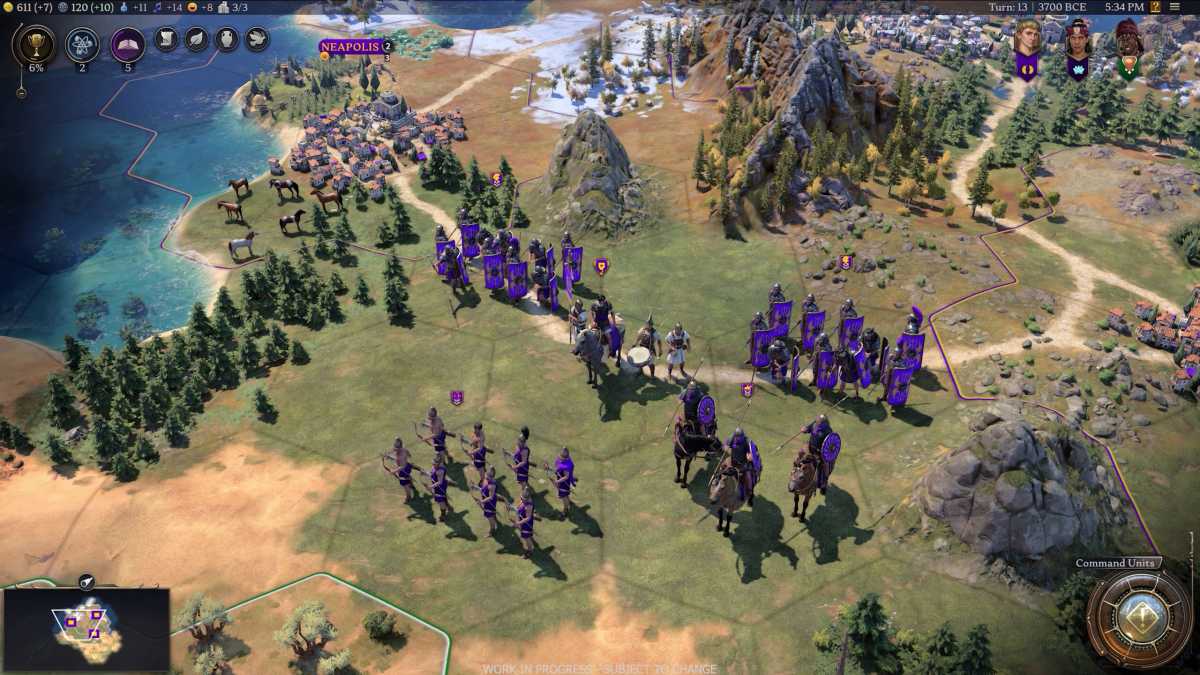
Battles bring significantly more different units onto the field and feel more staged. For example here, when we lead the legions of Rome, which are divided into heavy infantry, archers, cavalry and commanders.
Firaxis
On the one hand, Civilization VII is much more detailed than its predecessors and goes into much more depth per faction. For example, scouts can now roam the desert and build a canoe to cross rivers, allowing us to find waterfalls.
There, in those lush landscapes, we can create completely new settlements and resource paths that convey this beautiful Anno feeling.
Anno 117 is also set in the Roman Empire, which traded a lot with the Egyptians and had a strong alliance. After all, Marcus Aurelius and Cleopatra were a couple that united Rome and Egypt.
Battles also look much more massive. 10 legionaries and three cavalrymen on the battlefield represent roughly one legion of Rome attacking at different points in Egypt when war broke out with Emperor Octavian. We make tactical use of hills, mountain ranges, and the proximity to water and pincer Rome with simultaneous attacks from land and sea.
This is still more minimalist than an Age of Empires 4, for example, because one ship symbolizes an entire fleet. But overall it gives a much better insight into the course of battle than the toy figures in Civilization VII.
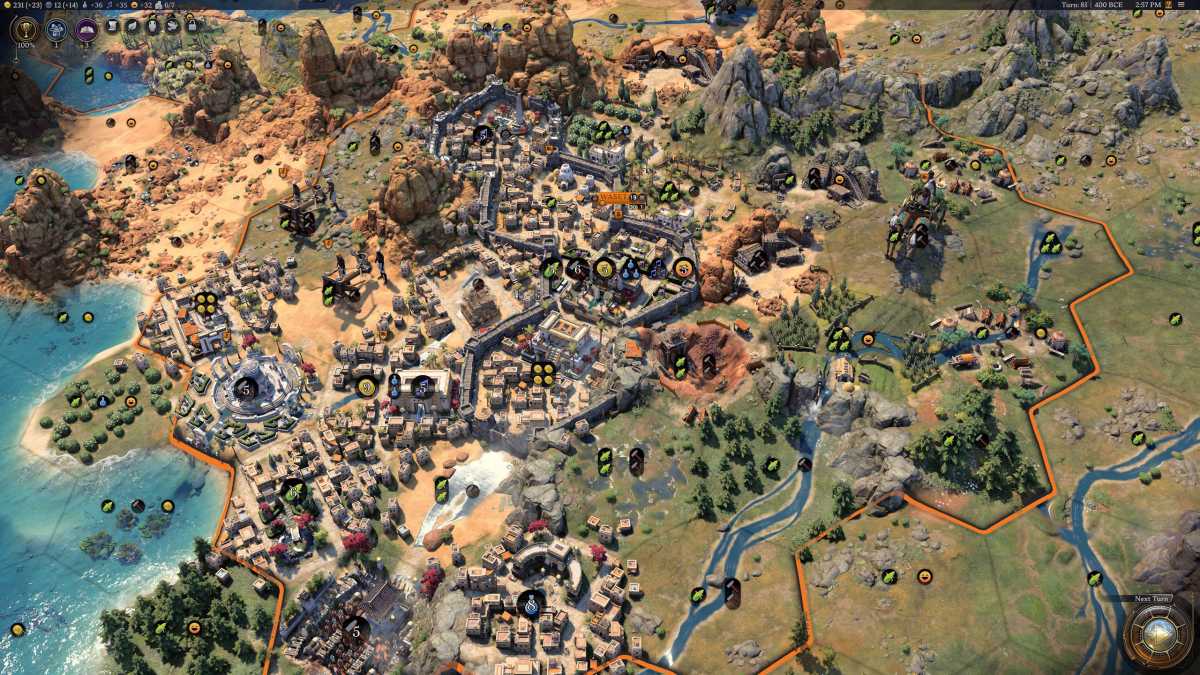
We can now protect each quarter with a wall, which provides defense bonuses and looks more impressive. There are also significantly fewer menus and instead more icons above each district, which affects resource production.
Firaxis
The Egyptians, for example, build several different temples for gods such as Anubis and Hapi in their civilization tree, which can then merge to form the Light of Amun-Ra, which brings five gold per palace for our economy and allows us to recruit unique priest units.
We’re seeing all this properly now. We’re experiencing these temples much more than before, where they were just a symbol on a map. In Civilization VI, an entire city was relatively small on the map, more like a city made up of Lego blocks. The districts did exist before, but now the whole thing feels more like a sprawling metropolis that we must totally protect with high walls.
A break in tradition, one new nation per age
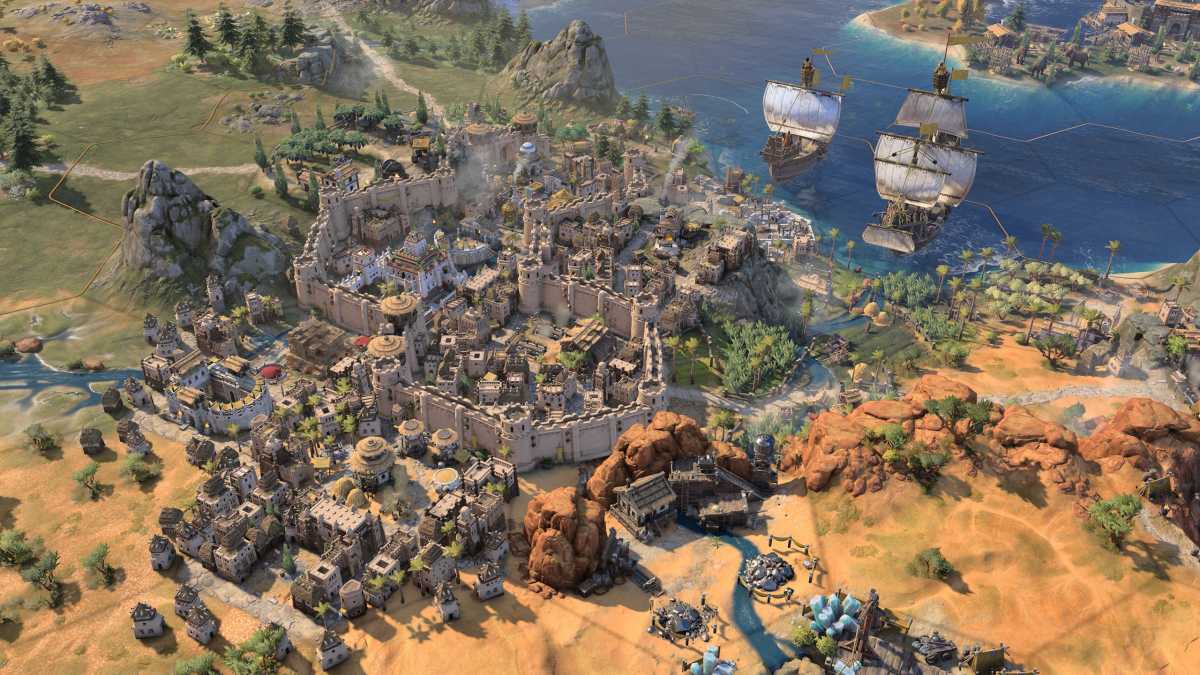
As the ages change, there are always new winners – Spain, for example, with one of the largest trading fleets, is exciting for the Exploration Age, which focuses on the oceans and the battle with cannons and muskets.
Firaxis
Civilization always had this one problem. Ancient Rome or Egypt were formative for mankind, but after antiquity these nations more or less disappeared from the scene. They were no longer influential, they no longer created anything great.
Sure, there were the Medici in Italy, who were very influential, but when it came to technology, other powers took over. Civilization VII now wants to fully reflect this. That’s why we build completely new metropolises on top of our old city and form alliances with those who shaped the era.
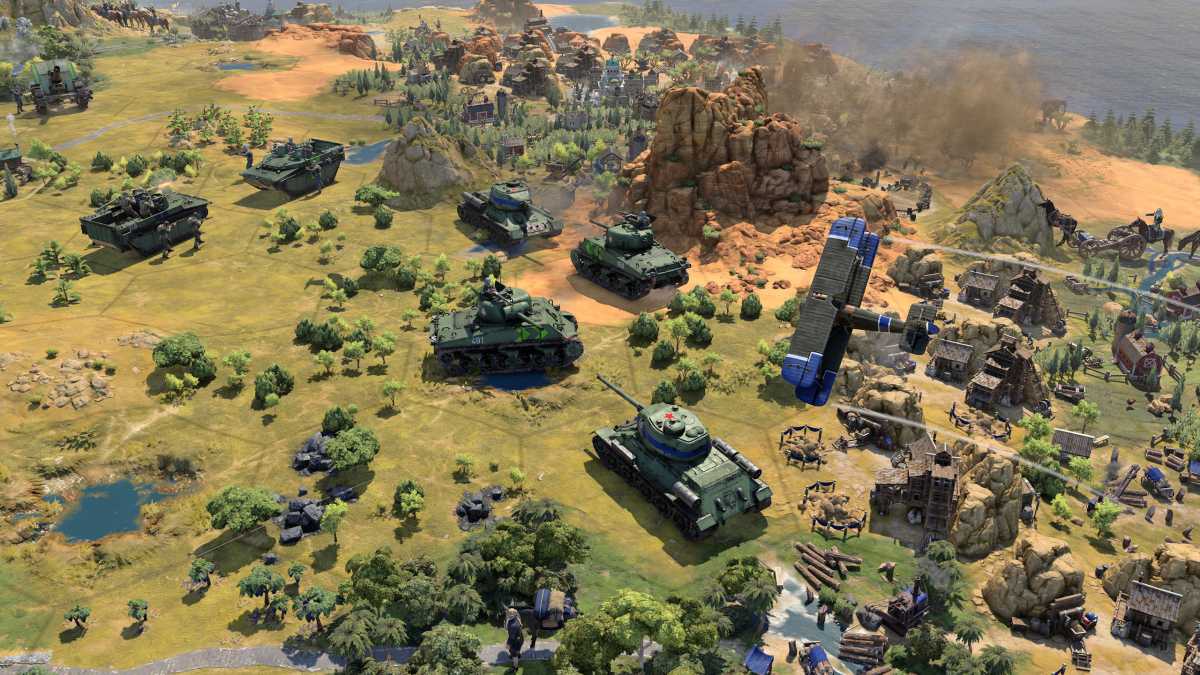
Graphically, this looks much more spectacular, just look at how detailed these tanks are designed here. The environment continues to play a major role in height differences and tactical aspects.
Firaxis
This is exciting, but risky. Humankind had a similar approach, which, unfortunately, never really became a big success. It has its fanbase and still gets 1,000 players a day on Steam, but it never managed to follow in Civ’s footsteps.
So what do Grandmaster Sid Meier and his Firaxis want to do differently? For starters, there are only three ages, so we don’t jump back and forth between nations as much as we did in Humankind.
There are four victory point conditions: Science, Culture, Military, and Economy. There’s also a Legacy Path, which we fill in with different cultures.

Civilization VII will be released on 11 February 2025, well before Anno 117, and is likely to appeal to precisely this fanbase. Just how beautifully the Roman Empire, its temples, bathhouses and legions are staged here is enough to make you look forward to more.
Firaxis
The journey continues from antiquity to outer space as the ultimate final destination. We also take our leader to new nations, which is wild, but fascinating.
The Age of Discovery was mainly characterized by Europe, because Spain, Portugal, and England had very strong fleets, which made world trade possible in the first place.
At the fall of the Roman Empire, which became Italy, the Italians were much less strong as a nation in international competition. However, they had founded Londinium, which became London and established the English as a naval power.
The principle is to bring the technological achievements of other nations into your own sphere of influence. The nation you are playing then uses steam power or railways to a greater extent than was actually the case historically.
One of the reasons why Egypt in particular fell so far behind after the ancient world was that they had no merchant fleets or navy that could keep up with the global competition. In Civilization VII, we can rectify such mistakes and allow long-forgotten empires to flourish in the long term.
Creative Director Ed Beach on the new ages
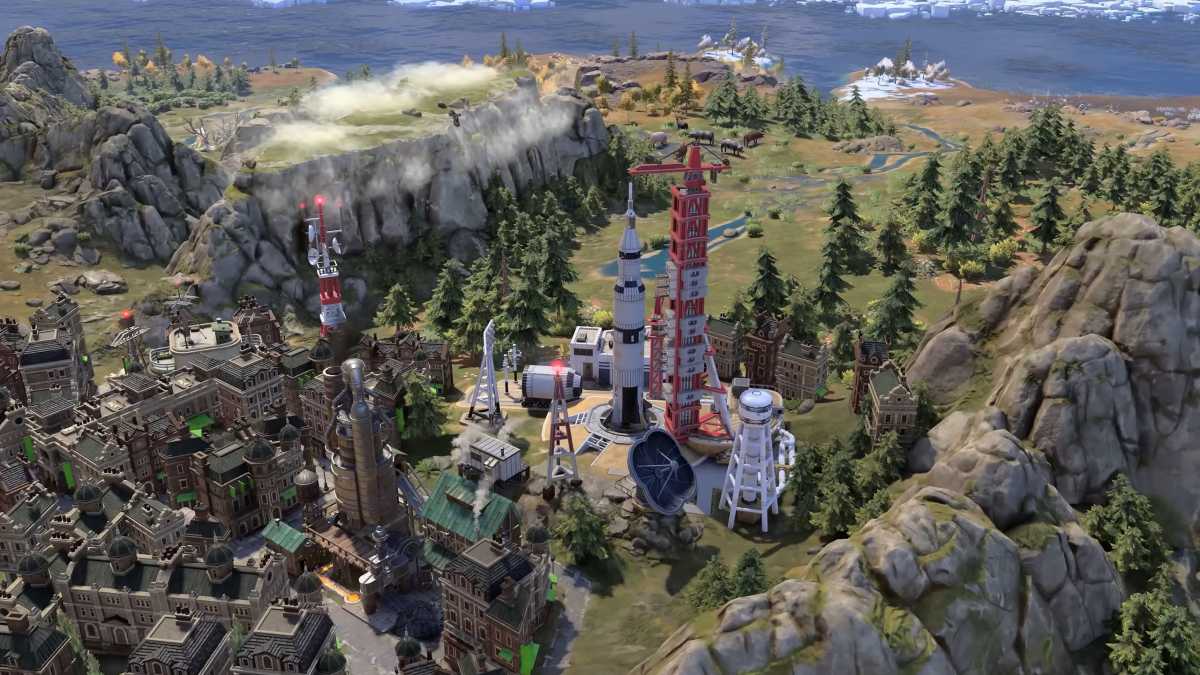
The ages are inspired by London, which was classically designed by the Romans as Londinium with a forum in the center and temples. And in Civ VII we could merge the industrial power UK with the space power USA and its NASA.
Firaxis
“Our biggest new feature for Civ VII is Ages. They are inspired by the fact that history has always been written in stages. The first nations laid the foundations of history, others continued to write the story as technology changed. Culture, religion, science.
In Civilization VII, these nations are faced with major crises at the end of an age and must develop. This means we can always use the technology from the countries that dominated that age.
We combine state leaders with leading figures from science, business or the military to forge completely new alliances.”
If you want to see much more gameplay of Civilization VII…
This all sounds very exciting because, for example, a nation like the Roman Empire, which dominated the age of sword-fighting, can form an alliance with France’s Bonaparte, who capitalized on the age of musketry and cannons.
Or we can go the more historically correct route. We lead Rome together with the Austro-Hungarian Empire, which included large parts of Italy. Then everyone can let off steam. And later we bring in leading figures from England who led the Industrial Revolution with steam engines and coal-fired power stations.
Each of these leaders has their very own skill tree, which we can further refine. Because anyone who leads a country has to move with the times or pass with the times.
Sid Meier’s Civilization VII will be released on 15 February 2025 for PC, Mac, PlayStation 5, Xbox Series X/S, and Nintendo Switch.
This article originally appeared on our sister publication PC-WELT and was translated and localized from German.



